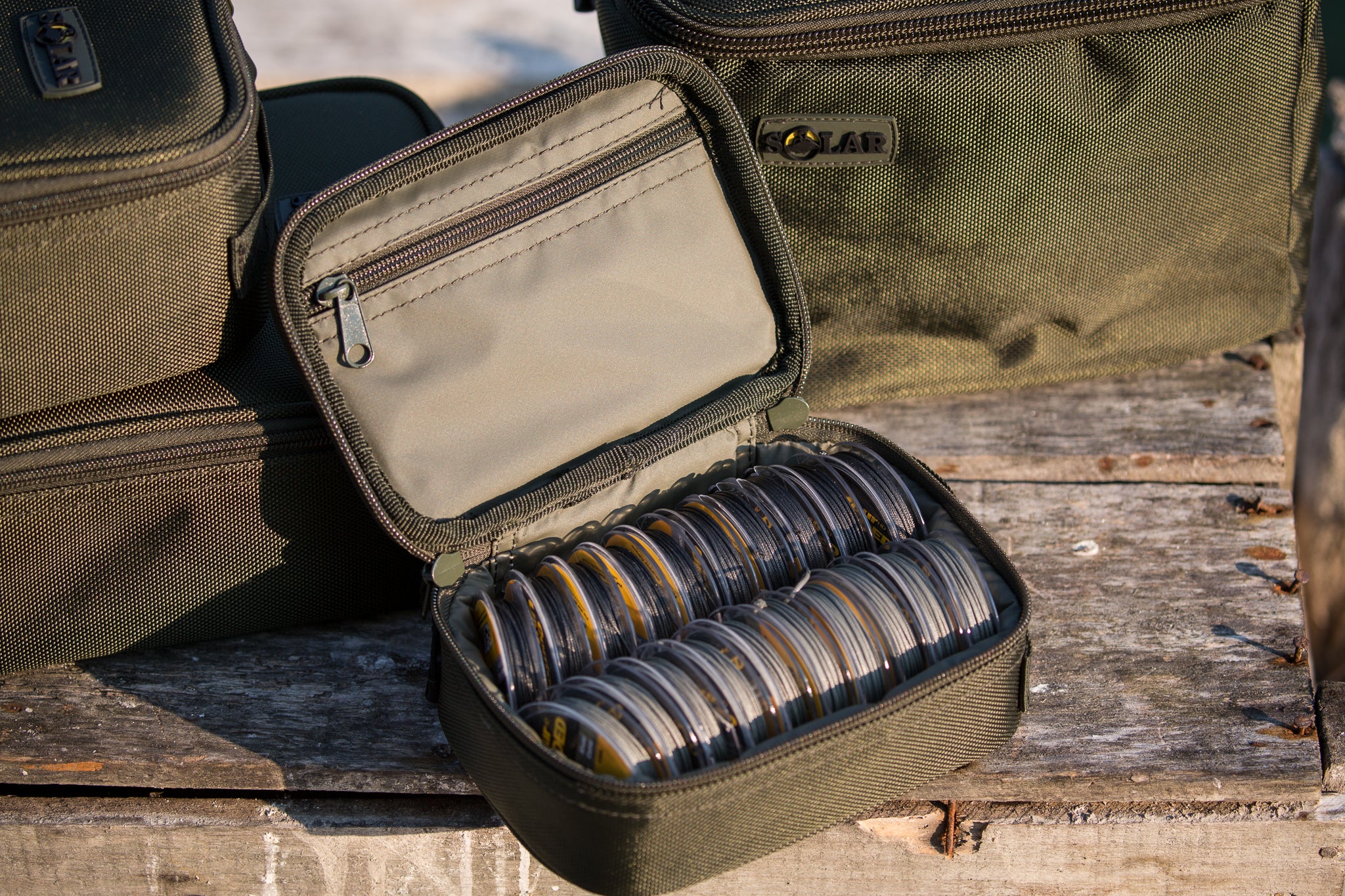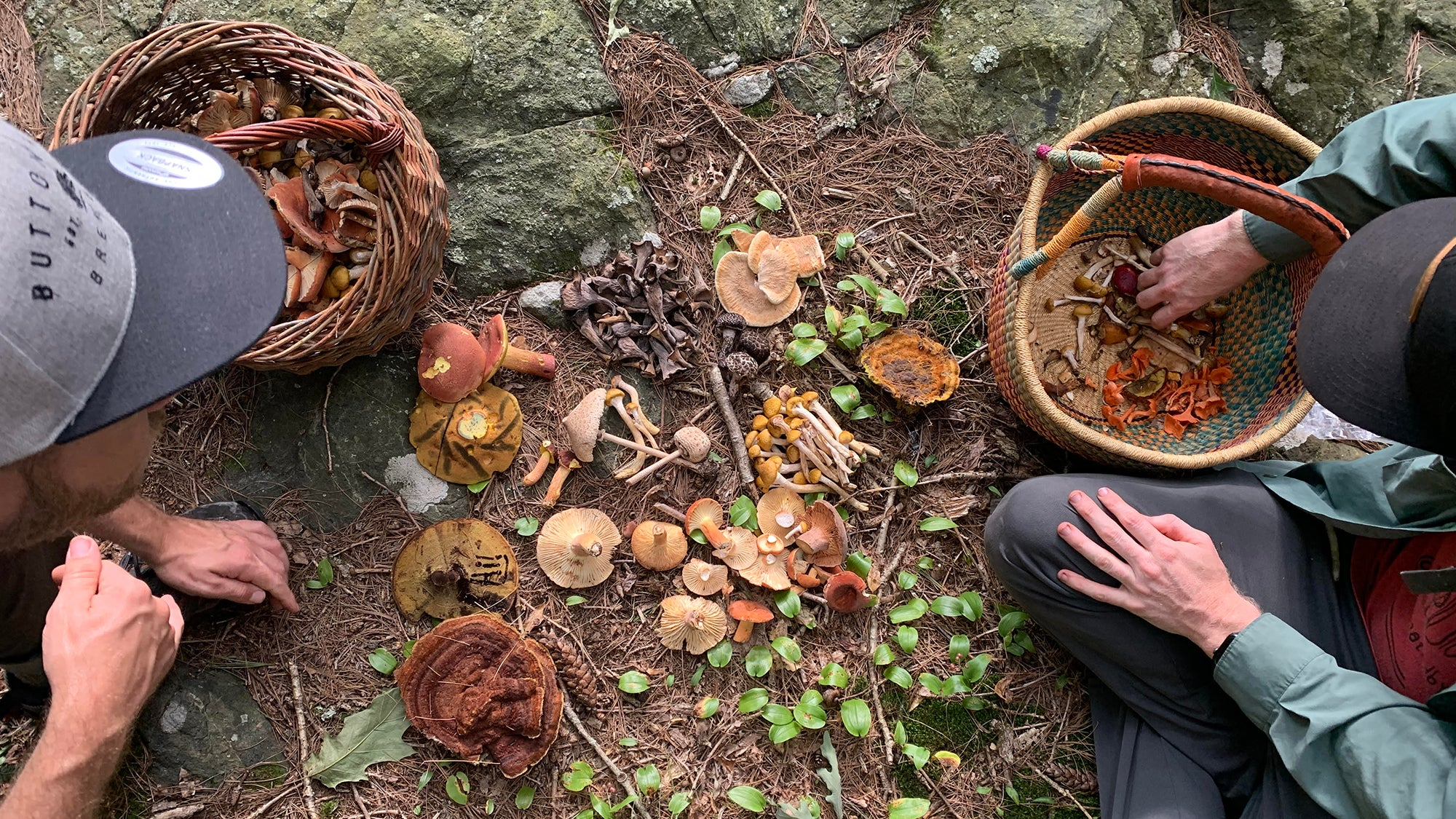Mushroom farming has become a popular agricultural venture in recent years, and the demand for high-quality mushrooms is constantly increasing. One critical aspect of mushroom cultivation is proper mushroom bag storage. This article will delve into the importance of proper mushroom bag storage and what mushroom bags are.
How to store mushroom bags before and after cultivation?
What are mushroom bags?
Mushroom bags are specialized bags used to grow mushrooms. These bags are filled with sterilized substrate material, which acts as a growing medium for the mushrooms. The substrate material is usually made up of a combination of grains, such as rye or wheat, and other organic materials, like sawdust or straw.
Once the substrate material is prepared, it is then loaded into mushroom bags. The bags are then sterilized to kill off any unwanted bacteria or fungi that could compete with the mushroom growth. After sterilization, the bags are inoculated with mushroom spores and left to colonize.
The importance of proper mushroom bag storage
Proper mushroom bag storage is critical to the success of any mushroom farm. The bags must be stored in a cool, dark, and humid environment to encourage healthy mushroom growth. Improper storage can lead to contamination, reduced yields, and poor quality mushrooms.
The following are some essential factors to consider when storing mushroom bags:
-
Temperature: Mushroom bags should be stored in a cool environment. The ideal temperature range for storage is between 50°F and 65°F. Higher temperatures can encourage bacterial growth, while lower temperatures can slow down mushroom growth.
-
Humidity: Mushroom bags require high levels of humidity to thrive. The ideal humidity range for storage is between 85% and 95%. Lower humidity levels can cause the bags to dry out, while higher humidity levels can lead to excess moisture and bacterial growth.
-
Light: Mushroom bags should be stored in a dark environment. Light can cause the bags to overheat and promote bacterial growth.
-
Airflow: Proper airflow is essential for mushroom bag storage. Bags should be stored in a well-ventilated area to prevent the buildup of carbon dioxide, which can stunt mushroom growth.
-
Contamination: Mushroom bags should be stored away from potential sources of contamination, such as pests, mold, and other fungi.
By properly storing mushroom bags, farmers can ensure healthy mushroom growth, higher yields, and better-quality mushrooms. Failure to store mushroom bags correctly can result in lost profits and reputational damage to the farm.
In conclusion, proper mushroom bag storage is an essential aspect of mushroom cultivation. Mushroom bags are specialized bags filled with sterilized substrate material, which acts as a growing medium for mushrooms. By following the proper storage guidelines, mushroom farmers can ensure healthy mushroom growth, higher yields, and better-quality mushrooms.
Before cultivation
Understanding mushroom bags
Mushroom cultivation has become a profitable industry in recent years, with the demand for high-quality mushrooms on the rise. Mushroom bags are an essential component of the cultivation process. In this article, we will discuss what mushroom bags are made of, the types of mushroom bags available, and the advantages of using them.
What are mushroom bags?
Mushroom bags are specialized bags used to grow mushrooms. These bags are made up of a combination of materials, including plastic, paper, and polypropylene. The bags are filled with a sterilized substrate that acts as a growing medium for the mushrooms.
The substrate material is typically composed of various grains such as rye or wheat, mixed with other organic materials such as sawdust or straw. After being loaded into the mushroom bags, the substrate material is sterilized to kill any unwanted bacteria or fungi that may compete with the mushroom growth.
Types of mushroom bags
There are two main types of mushroom bags: filter patch bags and spawn bags.
Filter patch bags have a small, breathable filter patch that allows for gas exchange while keeping contaminants out. These bags are typically used for growing mushrooms that require a high level of air exchange, such as oyster mushrooms.
Spawn bags, on the other hand, do not have a filter patch and are sealed with an autoclavable seal. They are commonly used for the spawn run, where the substrate is inoculated with mushroom spores, and the mycelium grows to fill the bag.
Advantages of using mushroom bags
There are several advantages to using mushroom bags in the cultivation process:
-
Increased yield: The use of mushroom bags can result in a higher yield compared to traditional growing methods. Mushroom bags provide a controlled environment that can be optimized for maximum yield.
-
Reduced contamination: Mushroom bags are designed to be sterile, reducing the chances of contamination from bacteria and other fungi.
-
Consistent quality: The use of mushroom bags allows for a consistent quality of mushrooms, which is essential for commercial production.
-
Easy handling: Mushroom bags are easy to handle and transport, making them an excellent option for smaller operations or home growers.
-
Cost-effective: Mushroom bags can be an affordable option for commercial growers, as they reduce the need for specialized equipment and can be reused for multiple growing cycles.
In conclusion, mushroom bags are a critical component of the mushroom cultivation process. These bags are made up of a combination of materials, filled with sterilized substrate, and used to grow mushrooms. The two main types of mushroom bags are filter patch bags and spawn bags, each with their advantages. The use of mushroom bags can result in a higher yield, reduced contamination, consistent quality, easy handling, and cost-effectiveness.
Preparing mushroom bags for storage
Mushroom bags are a crucial component in the mushroom cultivation process, and proper storage is essential to maintain their quality. In this article, we will discuss the steps to take before storing mushroom bags, including cleaning and sterilizing them, and proper labeling.
Steps to Take Before Storing Mushroom Bags
-
Harvest mushrooms: Before storing mushroom bags, ensure that all the mushrooms have been harvested. Leaving mushrooms in the bags can result in overripe mushrooms, which can lead to contamination.
-
Dispose of contaminated bags: Discard any mushroom bags that show signs of contamination or damage. These bags can spread unwanted bacteria or fungi to other bags, resulting in poor mushroom quality.
-
Sort bags: Sort mushroom bags based on the type of mushroom grown, the date of inoculation, or other relevant information. This will make it easier to retrieve the bags when needed.

Cleaning and sterilizing mushroom bags
Cleaning and sterilizing mushroom bags are essential steps to ensure that the bags are free of any contaminants that can affect the quality of the mushrooms. Follow these steps to clean and sterilize mushroom bags:
-
Empty the substrate: Empty the substrate from the mushroom bags.
-
Clean the bags: Clean the bags with warm water and soap. Be sure to remove any debris or leftover substrate.
-
Rinse the bags: Rinse the bags thoroughly with clean water to remove any soap residue.
-
Sterilize the bags: Sterilize the bags using a sterilization machine or pressure cooker. Follow the manufacturer's instructions for the appropriate sterilization time and temperature.
-
Allow bags to cool: Allow the bags to cool before handling them. Handling hot bags can lead to burns or tears in the bag.
Proper labeling of mushroom bags
Proper labeling is crucial to ensure that mushroom bags are stored correctly and easily identified. Follow these steps to properly label mushroom bags:
-
Use waterproof labels: Use waterproof labels that will not smear or become unreadable when exposed to moisture.
-
Label with relevant information: Label the bags with relevant information such as the type of mushroom grown, the date of inoculation, and any other relevant details.
-
Store bags in a labeled container: Store labeled mushroom bags in a labeled container to ensure that they are easily identified.
In conclusion, proper storage of mushroom bags is essential to maintain their quality. Before storing mushroom bags, ensure that all mushrooms have been harvested, discard contaminated bags, and sort bags based on relevant information. Cleaning and sterilizing mushroom bags are essential steps to ensure that the bags are free of any contaminants that can affect the quality of the mushrooms. Proper labeling is also crucial to ensure that mushroom bags are stored correctly and easily identified.
Storing mushroom bags before cultivation
Mushroom bags are an essential component in the cultivation of mushrooms. Proper storage before cultivation is essential to maintain the quality of the bags and prevent contamination. In this article, we will discuss the ideal storage conditions for mushroom bags, recommended storage duration, and common mistakes to avoid when storing mushroom bags.
Ideal storage conditions
Mushroom bags should be stored in a cool, dry, and dark location to prevent contamination and maintain the quality of the bags. The ideal storage temperature for mushroom bags is between 50-60°F (10-15°C). High temperatures can cause bags to spoil, while low temperatures can lead to condensation, which can result in contamination. Additionally, bags should be stored away from direct sunlight or any other light sources.
Recommended storage duration
The recommended storage duration for mushroom bags is dependent on several factors, such as the type of mushroom grown, the substrate used, and the storage conditions. In general, mushroom bags can be stored for up to six months before the substrate begins to degrade. However, bags that have been stored for more than three months should be checked for contamination before use.
Common mistakes to avoid when storing mushroom bags
-
Storing bags in a humid environment: Bags should not be stored in a humid environment as it can result in the growth of unwanted bacteria or fungi, leading to contamination.
-
Storing bags in direct sunlight: Bags should not be stored in direct sunlight or any other light sources, as this can cause bags to spoil.
-
Storing bags for too long: Bags should not be stored for too long, as the substrate can degrade, leading to poor mushroom quality.
-
Storing bags without proper labeling: Bags should be labeled with relevant information such as the type of mushroom grown and the date of inoculation. This helps to prevent confusion and ensures that bags are used within the recommended storage duration.
In conclusion, proper storage of mushroom bags before cultivation is essential to maintain their quality and prevent contamination. Ideal storage conditions include a cool, dry, and dark location, away from direct sunlight or any other light sources. The recommended storage duration for mushroom bags is dependent on several factors, such as the type of mushroom grown, the substrate used, and the storage conditions. Common mistakes to avoid when storing mushroom bags include storing bags in a humid environment, in direct sunlight, for too long, and without proper labeling.
After cultivation
Harvesting mushrooms
Harvesting mushrooms is an important step in the cultivation process. Proper harvesting techniques are essential to maintain the quality and flavor of the mushrooms. In this article, we will discuss how to tell when mushrooms are ready to be harvested, proper harvesting techniques, and handling and storing harvested mushrooms.
How to tell when mushrooms are ready to be harvested?
The timing of mushroom harvesting depends on the variety of mushroom grown. In general, mushrooms are ready to be harvested when the caps have fully opened, but before the gills start to turn dark. Some varieties of mushrooms, such as shiitake, may be harvested when the caps are partially opened. It's important to monitor the growth of the mushrooms closely to determine when they are ready to be harvested.
Proper harvesting techniques
Proper harvesting techniques are essential to maintain the quality and flavor of the mushrooms. Here are some tips for harvesting mushrooms:
-
Use a sharp knife or scissors to cut the stem of the mushroom at the base.
-
Avoid pulling or twisting the mushroom, as this can damage the substrate and affect the growth of future mushrooms.
-
Harvest mushrooms when they are dry, as wet mushrooms can easily bruise and become damaged during handling.
-
Leave a small portion of the stem attached to the mushroom, as this can help to extend the shelf life of the mushroom.
Handling and storing harvested mushrooms
After harvesting, it's important to handle the mushrooms with care to prevent bruising and damage. Mushrooms should be gently wiped with a dry cloth or brush to remove any debris or dirt. Avoid washing the mushrooms with water, as this can cause them to become slimy and spoil quickly.
Harvested mushrooms should be stored in a cool, dry, and dark location to prevent spoilage. A temperature of 32-36°F (0-2°C) is ideal for storing mushrooms. Mushrooms should be stored in a single layer in a container that allows for air circulation, such as a paper bag or a cardboard box.
In conclusion, proper harvesting techniques and handling and storage of harvested mushrooms are essential to maintain their quality and flavor. Mushrooms should be harvested when the caps have fully opened, but before the gills start to turn dark. Proper harvesting techniques include using a sharp knife or scissors to cut the stem of the mushroom at the base and avoiding pulling or twisting the mushroom. Harvested mushrooms should be stored in a cool, dry, and dark location and handled with care to prevent bruising and damage.
Storing mushroom bags after cultivation
Mushroom bags are a vital component of mushroom cultivation. Whether before or after cultivation, proper storage of these bags is critical to ensure the growth and yield of healthy mushrooms. In this article, we will focus on storing mushroom bags after cultivation. We will discuss the necessary steps to take after harvesting mushrooms, cleaning and sterilizing mushroom bags, and the ideal storage conditions for mushroom bags after cultivation.
Steps to take after harvesting mushrooms
Before storing the mushroom bags, it is essential to clean up the grow room to ensure no contaminants remain. Begin by removing all mushrooms from the grow room and dispose of any that are not suitable for consumption. After that, wipe down all surfaces and equipment that were used in the grow room with a disinfectant solution. This process will help prevent any contamination in future mushroom growing operations.
Cleaning and sterilizing mushroom bags
After the grow room is cleaned, the mushroom bags need to be cleaned and sterilized before storage. Begin by removing any remaining mushrooms and debris from the bags. Next, wipe down the outside of the bags with a damp cloth to remove any dirt or debris. Do not soak the bags in water, as this can lead to contamination. Once the bags are clean, they need to be sterilized using a pressure cooker or autoclave. Sterilizing the bags will help eliminate any bacteria or fungi that could contaminate future grows.
Ideal storage conditions for mushroom bags after cultivation
After cleaning and sterilizing the bags, they are ready for storage. The ideal storage conditions for mushroom bags after cultivation include a cool, dry, and dark place. The bags should be stored in a clean and dust-free area to prevent contamination. The temperature of the storage area should be between 50-60°F (10-15°C), and the humidity level should be around 70-80%. It is important to avoid exposing the bags to direct sunlight, as this can cause overheating and bacterial growth.
Recommended storage duration
Mushroom bags can be stored for up to six months after cultivation if stored under the proper conditions. It is essential to check the bags regularly for any signs of contamination or mold growth. If any signs of contamination are detected, it is recommended to dispose of the bags immediately to prevent further spread of the contamination.
Common mistakes to avoid when storing mushroom bags
One common mistake people make when storing mushroom bags after cultivation is failing to clean and sterilize the bags properly. This can lead to contamination of future mushroom grows. Another mistake is exposing the bags to direct sunlight, which can cause overheating and bacterial growth. It is also crucial to avoid storing the bags in areas with high humidity levels or fluctuating temperatures. This can cause mold growth and compromise the quality of the bags.
In conclusion, proper storage of mushroom bags after cultivation is crucial for future mushroom grows. Cleaning and sterilizing the bags and storing them under the right conditions will help ensure the growth and yield of healthy mushrooms. By following the steps outlined in this article, you can avoid common mistakes and maintain the quality of your mushroom bags.
Conclusion
In summary, proper storage of mushroom bags is crucial to ensure the success of your cultivation process. It is essential to understand the types of mushroom bags available and the advantages they offer. Before storing mushroom bags, it is important to clean and sterilize them properly and label them appropriately.
Ideal storage conditions for mushroom bags include a cool and dry environment, away from direct sunlight and moisture. It is recommended to store mushroom bags for a maximum of six months to prevent contamination and decrease in quality.
After harvesting mushrooms, it is important to clean and sterilize the mushroom bags to prevent contamination and ensure longevity. Proper storage conditions should still be maintained even after cultivation to prevent the growth of unwanted organisms.
In conclusion, proper storage of mushroom bags plays a significant role in the overall success of your mushroom cultivation. By taking the necessary steps to ensure proper storage, you can enjoy a higher yield of quality mushrooms and avoid common mistakes that may lead to contamination and decreased yields.
Summary of key points
- Mushroom bags are a crucial component of mushroom cultivation
- Cleaning and sterilizing mushroom bags before and after cultivation is important to prevent contamination
- Ideal storage conditions for mushroom bags include a cool and dry environment
- Proper labeling of mushroom bags is crucial for organization and identification
- Storing mushroom bags for a maximum of six months is recommended to prevent contamination and decrease in quality
By following these guidelines, you can ensure a successful and fruitful mushroom cultivation process.


























